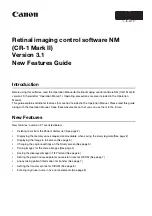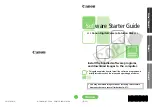
NOTE:
Even though you can include any of the preceding commands several times
in a route map entry, only the last
admission-bandwidth
command or
qos-bandwidth
command in the bandwidth map is used. In other words, if you included the
set
qos-bandwidth
command first and then the
set qos-bandwidth adaptive
command,
the bandwidth map uses the
set qos-bandwidth adaptive
command.
Interface-level and port-level admission control is performed when an OIF on the
interface or port is added to the mroute for a given (S,G) multicast data stream and
the multicast bandwidth map contains a
set admission-bandwidth
or
set
admission-bandwidth adaptive
action for that (S,G).
QoS adjustment is performed on the joining interface when an OIF is added to the
mroute for a given (S,G) data stream and the multicast bandwidth map contains a
set qos-bandwidth
or
set qos-bandwidth adaptive
action for that (S,G).
You can prioritize the traffic by configuring a priority value for the <S, G> data
stream on a physical port by issuing the
set priority
command. Dynamic multicast
admission control enables only prioritized groups to join the interface after the
configured priority limit is reached on the physical port. The system records the
priority when a new <S, G> entry is created. For more information, see “Enabling
Port Admission Bandwidth Control” on page 28 .
NOTE:
You can create a single route map with the
set admission-bandwidth
command, the
set qos-bandwidth
command, or both. However, creating an entry
with only one of these
set
commands enables only that specific function for the
matched address (that is, only multicast traffic admission control or only QoS
adjustment). The same is true for the
adaptive
commands.
Using the Autosense Mechanism
Video bandwidth is typically considered to be a constant rate—2 Mbps for standard
definition television (SDTV) and 10 Mbps for high definition television (HDTV).
However, in reality, and depending on achievable video compression, the bit rate
can vary. For example, HDTV streams (using MPEG4 or WM9 encoding) can vary
between 6 Mbps (for low-action programs) to 10 Mbps (for a fast-paced, high-action
programs). The autosense mechanism causes the bandwidth value, used for admission
control and QoS adjustment, to be the actual measured rate of the stream. Using this
feature to measure the actual bandwidth avoids the need to configure arbitrary
bandwidth limits and enables a channel to be reassigned to a different (S, G) without
requiring a bandwidth map to be changed.
How Adaptive Mode Works
You configure the auto-sense mechanism in the multicast bandwidth using the
set
admission-bandwidth adaptive
command,
set qos-bandwidth adaptive
command,
or both. For example:
host1(config)#
route-map mcast-bandwidths permit 10
host1(config-route-map)#
match ip address sdtv
Defining a Multicast Bandwidth Map
■
11
Chapter 1: Configuring IPv4 Multicast
Summary of Contents for JUNOSE 11.1.X MULTICAST ROUTING
Page 6: ...vi...
Page 8: ...viii JUNOSe 11 1 x Multicast Routing Configuration Guide...
Page 16: ...xvi List of Figures JUNOSe 11 1 x Multicast Routing Configuration Guide...
Page 18: ...xviii List of Tables JUNOSe 11 1 x Multicast Routing Configuration Guide...
Page 24: ...2 Internet Protocol Version 4 JUNOSe 11 1 x Multicast Routing Configuration Guide...
Page 64: ...42 Investigating Multicast Routes JUNOSe 11 1 x Multicast Routing Configuration Guide...
Page 100: ...78 Monitoring IGMP Proxy JUNOSe 11 1 x Multicast Routing Configuration Guide...
Page 145: ...Monitoring PIM 123 Chapter 3 Configuring PIM for IPv4 Multicast...
Page 146: ...124 Monitoring PIM JUNOSe 11 1 x Multicast Routing Configuration Guide...
Page 166: ...144 Monitoring DVMRP JUNOSe 11 1 x Multicast Routing Configuration Guide...
Page 168: ...146 Internet Protocol Version 6 JUNOSe 11 1 x Multicast Routing Configuration Guide...
Page 204: ...182 BGP Multicast JUNOSe 11 1 x Multicast Routing Configuration Guide...
Page 263: ...Part 3 Index Index on page 243 Index 241...
Page 264: ...242 Index JUNOSe 11 1 x Multicast Routing Configuration Guide...
















































